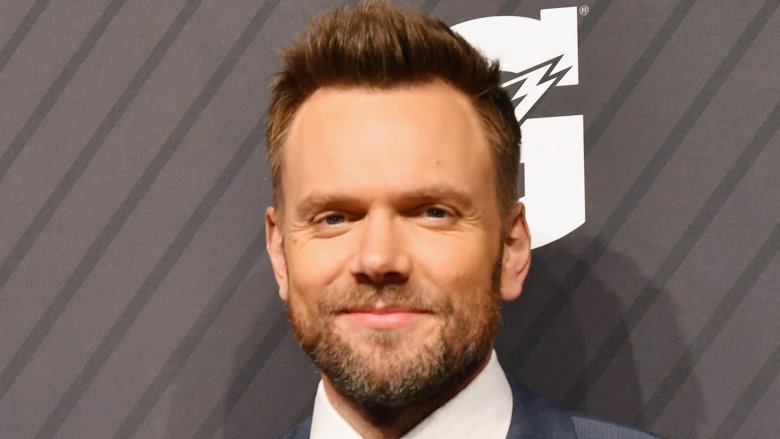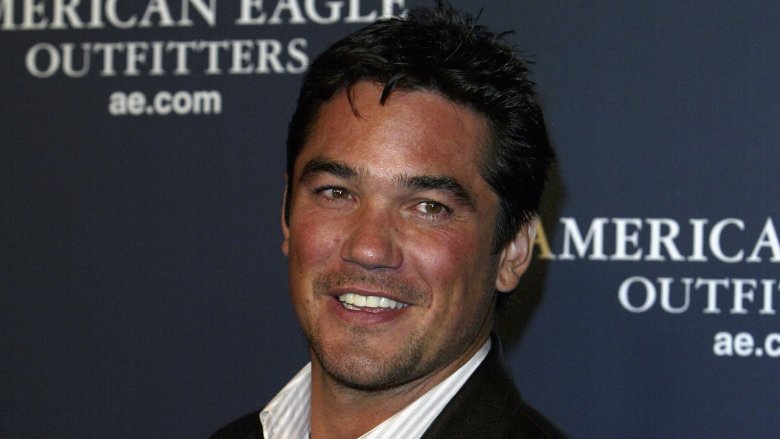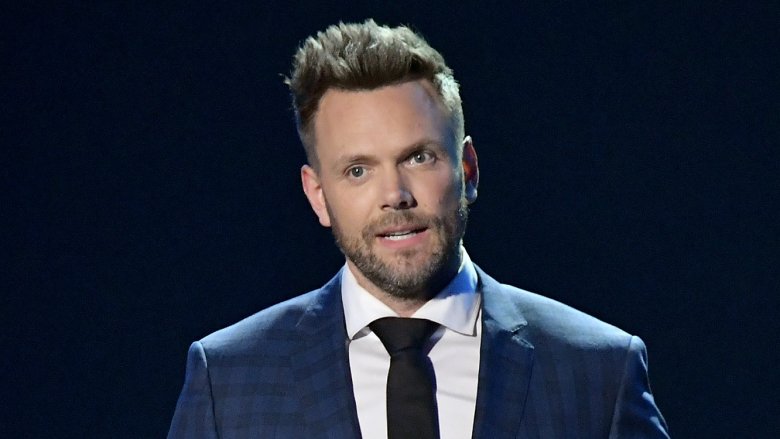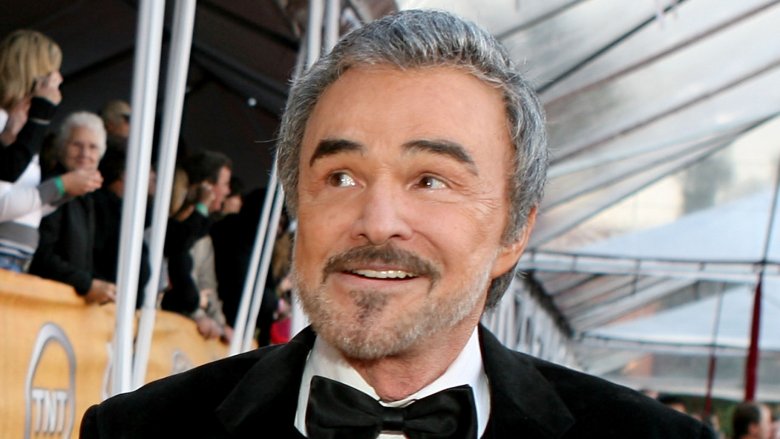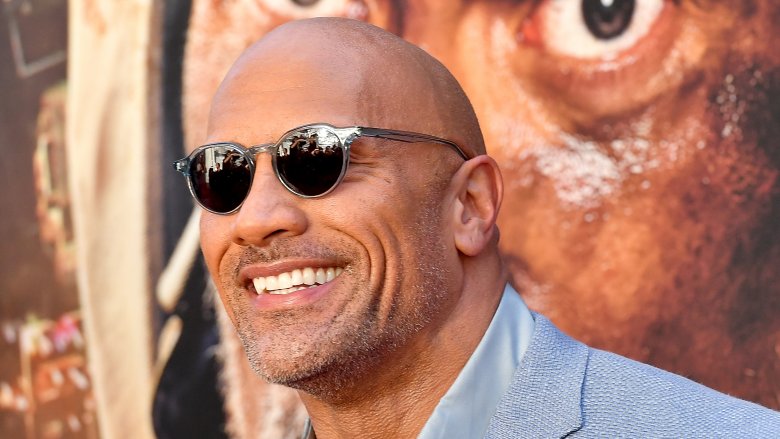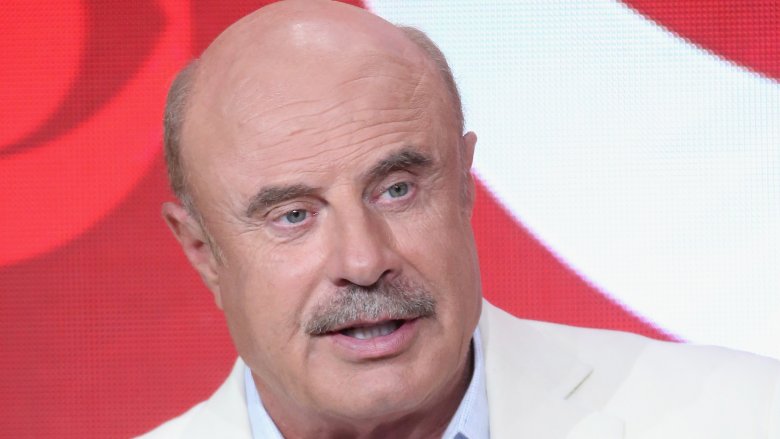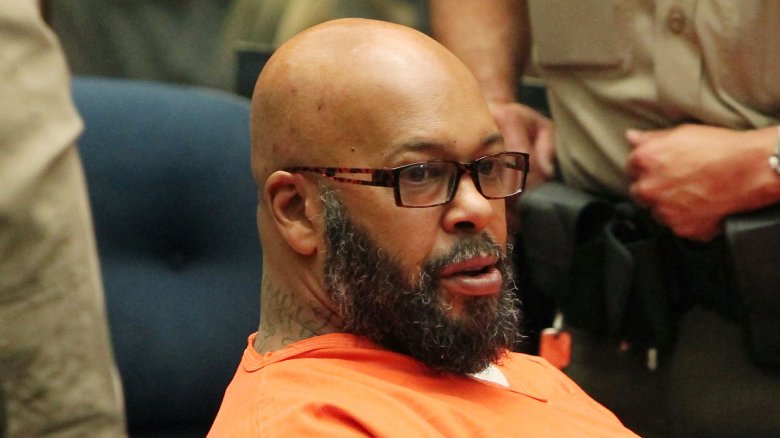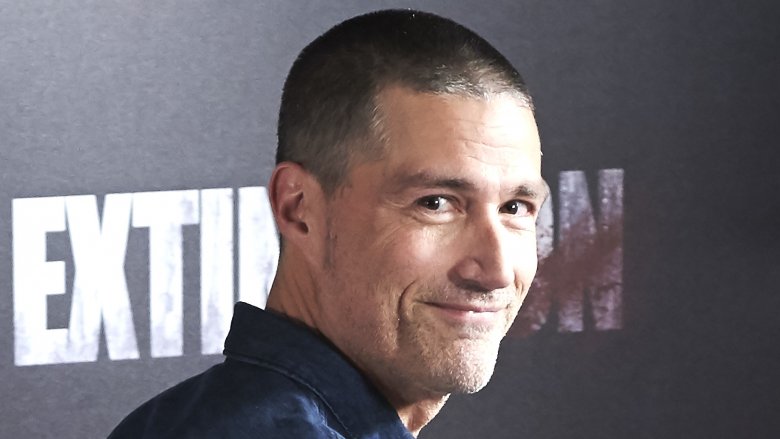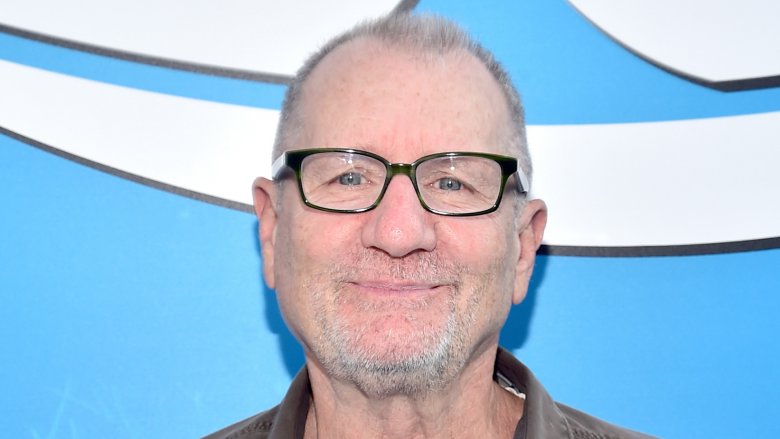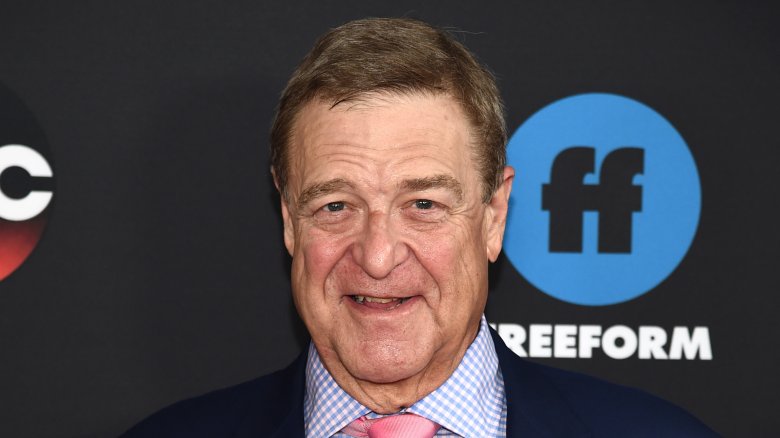Celebrities You Had No Idea Played College Football
Playing college football isn't that different from being a movie star, TV star, or some other kind of performer. Millions love you, you do your thing under very bright lights, and you can bring yourself lasting fame and glory. The only real differences are that being a silver-screen or small-screen star pays a whole lot better than college football, which pays nothing.
A lot of the biggest stars of yesterday and today got their first taste of fame (and living under constant public scrutiny) while part of the squad of a major college football program. Luckily for the world of entertainment, any ambitions or dreams they had of joining the NFL didn't quite work out, forcing them to fall back on acting, music, and art. Here are some familiar faces and names that once tore it up on the Saturday gridiron, giving them practice at plying their trade in front of screaming and adoring fans.
It's not a fair game if one of the teams has Superman
Dean Cain is most famous for his role as Superman on Lois & Clark: The New Adventures of Superman, ABC's kooky soap opera take on the Man of Steel mythos. A pretty boy, in other words — Cain plays mostly pretty boys. That supersedes any preconceived notions about Cain. For example, not only did he play college football, but he played college football at Princeton, one of the absolute best institutions in the country. At Santa Monica High School in California, he was a six-sport star (he told USA Football's blog that it made him "more well-rounded"), and he looked past all the West Coast schools that recruited him so he could play (and study) in the Ivy League. Once he got on the team as a sophomore defensive back, he was a dynamo, named all-conference in all three of his playing years. While a senior, he was an All-American and set a single-season interception record that stood until well past Cain had found fame as Superman and had moved on to playing nice-seeming-but-actually-evil husbands in Lifetime movies.
A Harmon-ious era for UCLA
The #1 pick in the 1941 NFL Draft was Tom Harmon, an All-American tailback out of the University of Michigan and the 1940 Heisman Trophy winner. Rather than go pro, Harmon joined the military, became a fighter pilot, was awarded a Purple Heart, and went on to a long sportscasting career. Similarly, his son, Mark Harmon (above), would also build an excellent college career but choose to do something with his life that wasn't football. (Acting!)
Harmon joined the squad at Oklahoma's small Pierce College in the early 1970s, attracting the attention of scouts from other schools who wanted the quarterback to transfer. He turned down the powerhouse University of Oklahoma for UCLA, where in 1972, he led the Bruins to a victory over Nebraska, breaking that school's 32-game winning streak. In Harmon's two years at UCLA, his team notched a 17-5 record. He also earned a degree in communications, which he actually used, communicating his characters' feelings and motivations in movies like Summer School and TV shows like the endlessly running NCIS.
Joel McHale was a Husky young man
Joel McHale has carved out a unique niche in Hollywood as a superstar of the fringes of entertainment. For six seasons, he starred on the cult-classic sitcom Community, while concurrently hosting The Soup on basic cable. Before he did all that, McHale hung out on the fringes of a major college football program.
After attending Mercer Island High School in Washington state, the University of Washington (about 13 miles away) recruited the 6'4" McHale for its rowing team. That had been his major sport in high school, but he'd also played a year of football, and he joined the Huskies' football squad as a walk-on. "The university had a healthy walk-on program because Don James, the coach, felt like you create the competition that will push the scholarship players to work harder," McHale told ESPN. McHale never played in an actual game for the Huskies, but he served on the practice squad for a year-and-a-half. "I was very good at making the defense look good when I was on scout offense," McHale said. "I knew how to crumple really well and get tackled."
Smokey and the Halfback
Before he was the coolest, best-mustached, and top-grossing (really) cinema icon of the late '70s and early '80s, Burt Reynolds was just a kid from Florida who happened to be a really good football player. The future star of Hooper, Gator, and Smokey and the Bandit honed his impressing-people-in-public chops as a high school star and earned himself a football scholarship to Florida State University, where he played for the Seminoles as a halfback. In his rookie season, he did pretty well for himself, running for 174 yards with two touchdowns on 16 carries. (Not bad for a freshman.) He probably would have fared just as well or even better in his sophomore year had he not blown out his knee during the first game of the season ... and then endured another injury and lost his spleen (fallout from a car accident) a few months later. After that, the only meaningful football Reynolds played again was fake football, in the 1974 prison-gridiron movie The Longest Yard.
He was a 'Rock' for the Miami Hurricanes
HBO's Miami-set Ballers isn't even remotely Dwayne "The Rock" Johnson's first experience with Floridian football. Back in the early '90s, before he was an action movie star, even before he was one of the most charismatic and dominant wrestlers the WWE has ever seen (he's a third-generation professional grappler), Johnson tackled one other manly pursuit: tackling other men.
Johnson enrolled in the University of Miami in 1991 and joined the Hurricanes' football team as a defensive lineman. Despite having the wall-like stature necessary to play defense on such a high level of the game — Johnson was listed at 6'5" and 290 pounds — he started just once in four years, but played in 39 games, producing 77 tackles and 4.25 sacks. His contributions might have been relatively minimal, but a title is a title — he was around for one of Miami's national championships.
The doctor was in (the game)
Nowadays, Dr. Phil McGraw tells people what to do with their lives and/or how to control their wayward teens on his extremely popular daytime talk show casually couched in psychology, a gig he got as a result of serving as a jury consultant to Oprah Winfrey when she was sued by the beef industry for defamation in 1996. (On an episode of her show, Oprah said the mad cow epidemic had "just stopped me cold from eating another burger.")
But before he was convincing people to like Oprah in court, and then himself on TV, McGraw was a football player in his home state of Oklahoma. Born and raised in the Sooner State, the imposing 6'4" McGraw landed himself a scholarship at the University of Tulsa in 1968, where he played middle linebacker. In his freshman year, McGraw helped make American sports history ... but not in a good way. The Tulsa Golden Hurricane lost to the University of Houston by a score of 100 to 6, one of the biggest routs ever.
Lots of Knight games in Vegas
Suge Knight has never been shy about throwing his weight around. That's true in the metaphorical sense — he's a tenacious business and music industry titan who co-founded Death Row Records and brought gangsta rap, the sound of the '90s, to the people. It's also literally true because he used his large physical frame and imposing stature to attack adversaries. (Result: He's got a long rap sheet full of gun charges and violent crimes.) Currently serving 28 years in prison for a hit-and-run, Knight once used his gifts for intimidation on the football field.
Literally straight outta Compton, Knight was a standout defensive lineman at El Camino Junior College in Los Angeles County before a UNLV coach lured him to play in Vegas. He started at nose guard and defensive tackle as junior and was named to the all-conference squad. UNLV named him its rookie of the year and captain of the defense.
Before Lost, Matthew Fox's team usually lost
Matthew Fox's time on the collegiate gridiron innately prepared him for two of the biggest roles of his life: He portrayed Marshall University assistant football coach Red Dawson in the 2006 film We Are Marshall, and being part of a squad of several dozen people was just a prelude to his time as a cast member of Lost.
In the late '80s, before he'd find his first success as an actor with Party of Five, the guy then known as Matt Fox attended the prestigious Ivy League school of Columbia University, where he played wide receiver on the school's abysmal football team. "Abysmal" isn't an opinion, that's hard facts. In 1988, Fox was on the field during a legendary game when Columbia beat Princeton 16 to 13 ... snapping a 44-game losing streak. One of his biggest memories of the day, however, was one of mild disappointment. "It was a rainy day and the sidelines were muddy, and I got chucked coming off the line and apparently went out of bounds. I thought I scored, but it was called back," Fox told Sports Illustrated, describing what he thought was a 40-yard touchdown run. "But more than anything, I remember the immense relief and euphoria that win brought."
The real Al Bundy, football hero
As the iconic loser Al Bundy on the 1987-97 sitcom Married ... with Children, Ed O'Neill often spoke of his character's shining moment: that one time in high school when he scored four touchdowns for Polk High in the 1966 Chicago City Championship game.
As for O'Neill, he was a pretty good football player in his youth — not Al Bundy good, but he held his own. The Youngstown, Ohio, native and Ursuline High School graduate won a football scholarship to Ohio University, but after two years transferred to Youngstown State, where he played as a defensive lineman. After getting his degree in history in 1969 (while also studying theater, which would come in handy, eventually), he signed with the Pittsburgh Steelers as an undrafted free agent. The state of the roster was such that O'Neill had to play outside linebacker, a position he'd never actually played. "So I was trying to learn it and make the team at the same time," O'Neill told CBS Sports. After two weeks of training camp, the Steelers sent him packing.
Before he was Dan, he was a football man
If he could spend nearly a decade portraying Dan Conner, a guy who could go toe-to-toe with all of the many outspoken members of the extended Conner family on Roseanne, and also spend most of his screen time in The Big Lebowski screaming at Steve Buscemi, then yeah, John Goodman could certainly handle a little college football.
Back in the 1970s, Goodman attended Missouri State University, or as it was then known, Southwest Missouri State University. He came to that particular college to play football, but an injury early on led him to focus his efforts instead on the theater program. Goodman still graduated in 1975, which just so happens to be the year that Saturday Night Live debuted, worth mentioning because Goodman has hosted that show an incredible 13 times. Acting — and appearing on a late-night comedy show is something a guy can do well into his sixties ... unlike, say, play football.
